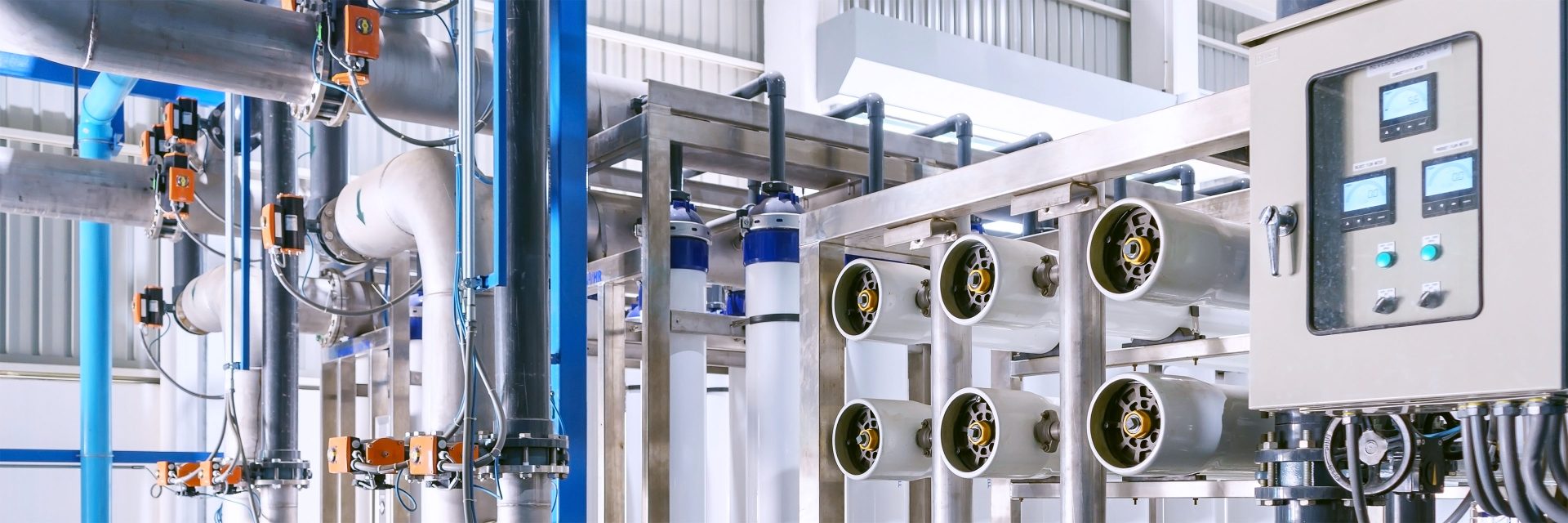
Save Energy, Save Money
Work with our engineers to make your food facility more energy efficient.It’s rare to find a plant that operates at maximum efficiency and, while most energy-saving measures come with upfront costs, operational savings can be achieved without great expense. Even in cases where a high upfront expenditure is necessary, the cost is often justified by long-term operational savings, and a manufacturer willing to play the long game can save considerable funds by designing facilities and processes that consume less energy to operate and maintain.
Bonus: Not only is energy efficiency good for operating costs, it can also support and help to satisfy corporate sustainability goals.


How to find energy efficiency in your manufacturing facility
Let’s dig into how you can take control of your food manufacturing facility’s energy use and operate more efficiently with eight practical strategies:
- Conduct an energy audit to find your energy hogs
- Choose energy-efficient equipment
- Start the conversation early to design with efficiency in mind
- Recover energy wherever possible
- Consider renewables and power purchase agreements (PPAs)
- Use energy load planning to make time-of-day rate variations work for you
- Consider the impact of the choice between greenfield and brownfield construction
- Select a site based on sustainability
1. Conduct an energy audit to find your energy hogs
Reducing energy consumption begins with an energy audit of your process and building operations, assessing how they can be adjusted to promote energy efficiency in manufacturing. Using flow diagrams, engineers can estimate the utilities needed for each step in the process and for each piece of equipment, then compare this to the case in which 100% efficiency is assumed. This allows a manufacturer to identify steps where even small percentages of efficiency can be gained to reduce overall energy use.
Pinpoint your energy use through smarter metering
Metering for specific equipment measures the resources consumed by a single process line or a single area in terms of water, electricity, gas, and steam. Unfortunately, when a large facility only has a single meter to monitor something like total natural gas use, it is impossible to determine where energy savings could be made. While remedying this in older plants may be impractical, with a new facility, consider metering individual lines or even pieces of equipment.
Use heat pumps
The largest amounts of energy go into heating and cooling a building, so choosing more energy-efficient options is the place to start. For example, significant cost reduction is possible with heat pumps, which can be eight times as efficient as electric boilers and are capable of reducing consumption from 9 megawatts to 2 megawatts and operational cost by 75%. With the amount of throughput we see in some processes, a small gain of 5–10% in efficiency can lead to tens of millions of dollars in electrical and mechanical savings over time, by reducing water and natural gas use to generate steam, chemical costs, and waste treatment.
Look to process line utilities
The next largest consumers in a food manufacturing plant are the utilities required to support the processing line. This includes electricity to run motors, boilers, chillers, agitators, and other equipment, as well as natural gas to generate steam. If the process requires temperatures only up to 50° C, a water hydronic system can be used as a lower energy alternative to steam. Likewise, for cooling needs, ammonia-based refrigerants can replace a hydrofluorocarbon-based refrigerant like R-410A or R-134a. Ammonia-based refrigerants are cheaper to build and operate, more efficient, and safer for the environment. Geothermal is another cooling option, though this comes with a high upfront cost.
2. Choose energy-efficient equipment
The energy efficiency of equipment, such as cookers and coolers, greatly impacts the ability to reduce consumption. For example, the heat exchange rate for natural gas to generate steam for direct contact cooking of meat can be as low as 15%. This variable can be controlled to some extent by choice of equipment and whether it uses steam, hot oil, or some other heating option.
Other examples of energy-efficient equipment include: agitator tanks with hydrofoils that have the same motive force as those with a marine prop but with lower electricity consumption; newer chillers with large economizers that pull cold ambient air from outside to generate chilled water rather than using mechanical power; and fans with electronically commutated motors (ECM) or induction motors. Options such as variable speed drives and LED lighting—both of which offer superior energy efficiency—have been largely implemented in most buildings.
The choice of equipment is project specific and requires a complete understanding of the manufacturing process. For example, if a chiller is going to ramp up and down continually, it’s best to source one that is efficient across the entire range of its operation, rather than choosing one that is most efficient only at its highest operating point.
3. Start the conversation early to design with efficiency in mind
Considering energy efficiency during layout and design offers more opportunity to maximize overall efficiency and sustainability in your food and beverage facility. We estimate the baseline energy needs, then make tweaks on the generation side to see potential cost savings. A good place to start is to isolate rooms that require heating (e.g., for baking or cooking) so heat is not spread to other areas of a facility.
Challenge air change needs
Engineers should challenge assumptions about the number of air changes needed. A small reduction in airflow can save a lot of energy over the life of a project as well as upfront expenses by reducing the required size of an air handler. Of course, reducing the footprint of a space means fewer air exchanges and lower needs for heating and cooling. Lowering a ceiling from 24 feet down to 16—while keeping in mind future flexibility for equipment upgrades or a change in the process—reduces heating requirements, the number of air exchanges, and the electrical needs of an air handler by one-third. Optimizing the flow of the process can also lead to greater production with the same energy consumption.
Test your design first
CRB runs process simulations to determine the most effective movement of goods in a building to reduce the facility footprint. Better use of equipment can also reduce the amount of stock coming in, allowing shrinkage of the storage needs and building size. This opens up the possibility for more just-in-time production.
4. Recover energy wherever possible
Recovering energy, or using one source for multiple purposes, is another way to improve efficiency and lower manufacturing costs. Here are some cost-saving strategies for recovering energy in your manufacturing process:
- Reuse ‘waste’ heat from a process—such as baking—to preheat water in other areas of the plant instead of exhausting it out the roof.
- Reuse dry heat needed for tablet coating to preheat incoming air. For tablet coating, ambient temperature air is brought in from outside, cooled to dehumidify, then reheated to 90°C, run through the tablet coater, and exhausted. That heat, which is still at 60 °C, could be used to preheat incoming air.
- Reuse process condensate, wash water, and reverse osmosis reject water. We leveraged this method for MycoTechnology to feed the fluid cooler. At peak production, the water savings amount to 1.26 million gallons per year, a significant savings in Colorado, where water is a limited resource and a significant cost to processors.
- Many food and beverage products are heated with hot water or steam, then must be cooled to stop the cooking process and for storage. Once milk has been sterilized via high temperature short time (HTST) pasteurization, the heat released during cooling could be recycled back to preheat milk at the beginning of the process.
5. Consider renewables and PPAs
Alternative sources of energy can lead to operating cost reductions in manufacturing and provide resilience during power outages caused by storms or other natural disasters. Cogeneration, geothermal, and solar are the most common alternatives to the electrical grid. Gas-fired turbines and gas-fired engines are used for cogeneration, generating both electricity and heat. Solar includes both photovoltaic panels that generate electricity and panels for the passive generation of hot water.
Pursue on-site and off-site renewable energy generation
Instead of owning its energy production system, a manufacturer may enter into a power purchasers agreement (PPA) with a company that generates electricity. In an on-site agreement, a manufacturer provides a building shell and pays a third party to install the engines, batteries, or other equipment needed to make energy. The third party then sells the energy to the manufacturer. Alternatively, a company can buy energy from a provider that has its own building to generate electricity. Whether on-site or off-site, these agreements provide a level of energy redundancy.
Energy offsets
Energy offsets entail buying carbon credits—from a solar or wind farm—to make up for the energy a facility consumes and its carbon emissions. This is a way for companies to achieve their zero carbon goals.
6. Use energy load planning to make time-of-day rate variations work for you
In areas where utility companies charge considerably more for on-peak use of electricity, resourceful manufacturers have strategies to reduce use during peak hours. Innovative energy load planning can take many forms, including:
- While most people want to work during the day, it may be economical to include another shift or run a plant 24/7 to take advantage of off-peak utility pricing.
- In California, companies will make ice all night when electricity is cheapest, then use it for the manufacturing process or to cool buildings during the day.
- Batteries can be charged from solar panels when there’s excess capacity during peak or off-peak hours, then drained during times when use exceeds production or even sold back to the utility at peak rates.
- For some food production plants, cleaning is the heaviest user of water. This can be scheduled outside normal work hours to avoid heavy boiler use and reduce natural gas peak load during daytime hours.
7. Consider the impact of the choice between greenfield and brownfield construction
Many factors go into whether a facility will be a new build or a retrofit. A greenfield design allows the inclusion of cost-saving measures around which a building can be designed, thus lowering capital expenses for each energy-saving feature. Even if an energy-saving option is a larger initial investment, its efficiency should lead to long-term savings in operating expenses. The U.S. Green Building Council, which operates the LEED certification program, estimates that building sustainably adds little to construction costs, while saving almost 20% in maintenance expenses and using about 25% less energy.
Alternatively, with a brownfield site, the expense of replacing a functional piece of equipment (e.g., boiler) for a new, more efficient one can be hard to justify. For retrofit projects, it’s worth speaking to maintenance staff, who are intimately familiar with the process and may have suggestions for equipment or areas to target for energy savings.
8. Select a site based on sustainability
A lot of factors go into site selection. In addition to considerations about shipping and receiving, and the benefit of being central to suppliers and customers, there is the real potential for energy cost reduction in manufacturing. This becomes a choice between retrofitting, or building adjacent to, an existing facility to conserve resources versus building a new plant on a site that has access to alternative energy sources or cheaper electricity rates.
Case studies: Cost savings and energy efficiency
Going where energy is cheaper—and creating a more reliable energy source
Variations in the cost of electricity can impact decisions about how to adjust processes to use less energy. In regions where power companies offer a payback for cogeneration—the use of one source of energy for multiple purposes—it can be worthwhile to install cogen systems. For example, a facility paying 40 cents per kWh decided to install cogeneration equipment. Even including the initial outlay and ongoing operating expenses of the system, they are making power at 8-10 cents per kWh. Not only is this sustainable due to using more of the available energy, it also provides reliability for the plant and a potential to sell back excess power at a profit. While this worked because of the high cost of electricity at this site, it wouldn’t make sense to try to recoup the investment in a cogeneration system in a region with substantially lower electricity rates.
Seeking ammonia alternatives for cooling
A food manufacturer was interested in using geothermal energy rather than ammonia for a new process that required a heat transfer fluid temperature above 15°C. We worked with a trade partner to assess the client’s site options in terms of plausibility of sourcing geothermal energy. As a result, multiple sites in Missouri were identified as excellent options for geothermal needs with aquifers that maintain a steady 9°C year-round.
Planning for cost reduction with a sustainable future
When considering an energy master plan, which is like a strategic facility plan that focuses on meeting energy targets, it is important to anticipate the potential future expansion of a site to ensure its resilience. This could include planning enough space to dig geothermal wells or for additional heat pumps, boilers, and chillers—not only for potential redundancy, but to meet future growth.
It can be challenging for a food manufacturer that needs to get partial capacity in production quickly to envision the most energy-efficient plan for future, larger-scale production. While you can save money by aiming low in the short-term, the challenge comes when estimating potential energy needs, then designing a process and facility around that with the highest possible efficiency and overall value—it might cost more upfront to save money in the long run.
Energy efficiency boosts more than the bottom line
There are good reasons to reduce energy use beyond saving money. Organizational reputation is important to today’s consumers, including viewing a company as a good environmental steward. In fact, a subset of food and beverage manufacturers we surveyed for our Horizons: Pet Food report recognized this and chose financial benefit/ROI (26%) and corporate social responsibility (23%) as the primary drivers for their company’s sustainability goals. A substantial fraction of pet food manufacturers also have net-zero or carbon-neutral goals baked into their five-year sustainability plans.
Reducing operating costs, reaching sustainability goals, and ensuring energy redundancy are the result of thorough planning. When you’re ready to build your next manufacturing facility, our energy experts are here to help you meet your efficiency goals.



